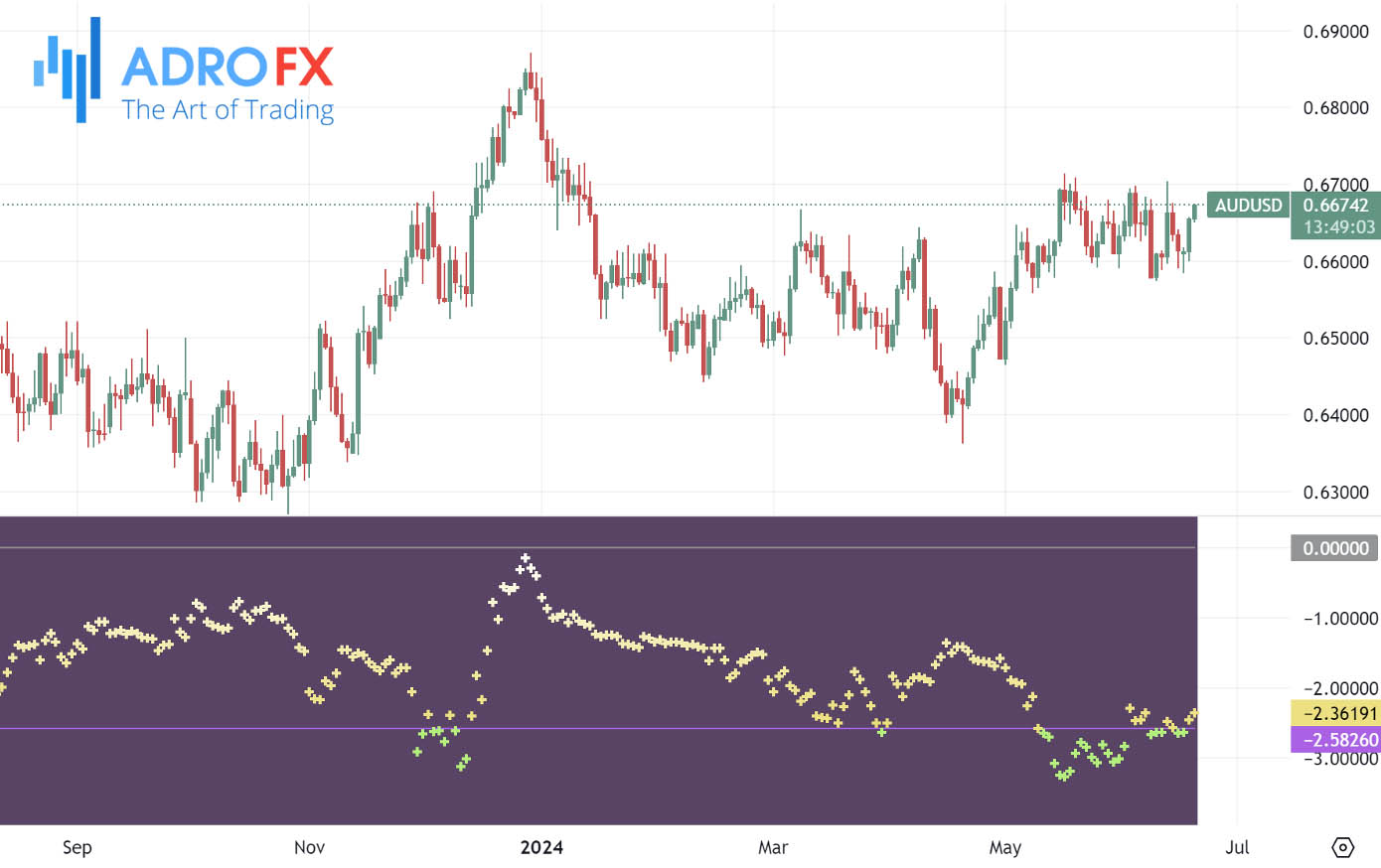Achieving Market Neutrality: Exploring Pair Trading

Pair trading, also known as statistical arbitrage, is a market-neutral strategy that involves simultaneously buying and selling two correlated assets. The idea is to capitalize on the relative price movements of the paired assets, assuming that their historical price relationship will revert to the mean over time. This strategy relies heavily on statistical analysis and is commonly used in equity markets but can be applied to various asset classes.
In today's volatile and unpredictable market environment, pair trading offers a unique advantage. It allows traders to mitigate the impact of broader market movements, focusing instead on the relative performance of two correlated assets. This market-neutral approach is particularly valuable during periods of economic uncertainty or when markets exhibit high levels of volatility. By reducing exposure to systemic risks, pair trading can provide more consistent returns and lower overall portfolio risk.
This article aims to provide a comprehensive guide to pair trading strategies. We will explore the fundamental concepts, key components, and various strategies involved in pair trading. Additionally, we will discuss the implementation process, risk management techniques, and advanced approaches to enhance your trading effectiveness. Whether you are a novice trader looking to understand the basics or an experienced trader seeking to refine your strategies, this article aims to equip you with the knowledge and tools necessary for successful pair trading.

Understanding Pair Trading
Pair trading is a strategy that involves taking long and short positions in two historically correlated assets. The core idea is to exploit the temporary divergence in their price movements, anticipating that the prices will eventually converge back to their historical relationship. For example, if two stocks in the same industry have moved in tandem over a long period but suddenly diverge, a trader might short the outperforming stock and go long on the underperforming stock, expecting the prices to realign.
The concept of pair trading dates back to the 1980s when it was first developed by quantitative analysts at Morgan Stanley. The strategy gained popularity due to its market-neutral nature, which appealed to institutional investors looking for ways to profit regardless of overall market direction. Over the years, pair trading has evolved with advancements in statistical methods and technology, making it accessible to a broader range of traders, including retail investors.
One of the main advantages of pair trading is its market neutrality, which reduces exposure to market-wide risks since gains from one position can offset losses from the other. This strategy can generate consistent returns, particularly in volatile markets where asset prices frequently revert to the mean. Additionally, by focusing on relative price movements rather than absolute price movements, traders can diversify their strategies and reduce portfolio risk.
However, pair trading does come with its challenges. It requires a strong understanding of statistical analysis and access to sophisticated tools for identifying and analyzing pairs. The need to maintain multiple positions can lead to higher transaction costs, which can eat into profits. Moreover, there is always a risk that the prices of the paired assets may not converge as expected, leading to potential losses. By understanding these fundamental aspects of pair trading, traders can better appreciate its potential benefits and challenges, paving the way for more informed and strategic decision-making in their trading activities.
Key Components of Pair Trading
A successful pair trading strategy relies on several key components, starting with the selection of pairs. The criteria for choosing pairs typically involve finding two assets that have a strong historical correlation. This correlation is often based on economic linkage or belonging to the same industry or sector. Commonly paired stocks or assets include those from sectors like banking, energy, or technology, where businesses often exhibit similar performance trends.
An essential aspect of pair trading is understanding the statistical relationship between the chosen pairs, particularly cointegration. Cointegration refers to a statistical property of a collection of time series variables which indicates that a linear combination of them has a stable, long-term relationship. In simpler terms, while the prices of the paired assets may move independently in the short term, they are bound by a common trend over the long term. This relationship is crucial for pair trading as it forms the basis for expecting the price divergence to eventually converge.

To test for cointegration, traders employ various statistical methods, one of the most common being the Augmented Dickey-Fuller (ADF) test. This test helps determine whether a time series variable is non-stationary and possesses a unit root, which in turn is used to establish the presence of cointegration between the pairs. Successfully identifying cointegrated pairs is a fundamental step in executing a reliable pair trading strategy.
Pair Trading Strategies
Pair trading encompasses several strategies, each with its own methodology and benefits. One widely used approach is the market-neutral strategy. This strategy involves taking equal and opposite positions in the paired assets, mitigating broader market movements' impact. The primary benefit of this approach is the reduction of market risk, allowing traders to focus on the relative performance of the paired assets. For example, a trader might go long on Stock A and short on Stock B, both within the same industry, thus capitalizing on the expected convergence of their price movements while remaining insulated from sector-wide volatility.
Another popular strategy is the mean reversion strategy, which is based on the principle that asset prices tend to revert to their historical average over time. In this approach, traders identify pairs that have deviated significantly from their mean spread and place trades anticipating a return to this mean. The benefit of this strategy is its reliance on statistical regularities, making it less dependent on market trends and more on historical price behavior. For instance, if Stock A and Stock B have historically traded within a certain spread range but recently diverged, the trader would bet on this spread narrowing back to its historical average.
The long/short strategy is another variant that involves taking a long position in the underperforming asset and a short position in the outperforming one. This strategy is advantageous in that it allows traders to benefit from relative price movements without being exposed to overall market direction. For example, if a trader notices that Stock A is undervalued relative to Stock B, they would buy Stock A (long) and sell Stock B (short), profiting from the expected relative appreciation of Stock A and depreciation of Stock B.
Each of these strategies offers unique advantages and can be tailored to fit different market conditions and trading styles, providing traders with a versatile toolkit for navigating the complexities of financial markets.
Implementing Pair Trading
Implementing a pair trading strategy involves a systematic approach to ensure its effectiveness and profitability. Here's a step-by-step guide to help you navigate the process:
- Identifying Pairs
The first step is to identify pairs of assets that have a strong historical correlation or cointegration. This can be achieved by selecting stocks from the same industry or sector, which often exhibit similar performance trends due to shared economic factors.
- Statistical Analysis and Backtesting
Once potential pairs are identified, conducting a thorough statistical analysis is crucial. This involves testing for cointegration using methods such as the Augmented Dickey-Fuller (ADF) test to confirm that the pairs move together over the long term. Backtesting the strategy on historical data helps assess its potential profitability and risk, ensuring that the chosen pairs perform well in various market conditions.
- Placing Trades
After confirming the statistical relationship, the next step is to place trades. This involves taking a long position in the undervalued asset and a short position in the overvalued asset, based on the expectation that their prices will converge. It's essential to size these positions appropriately to maintain a market-neutral stance.
- Monitoring and Adjusting Positions
Continuous monitoring of the trades is necessary to respond to market changes. Traders should regularly review the performance of the pairs, making adjustments as needed to maintain the desired spread. This might involve closing positions when the spread converges or re-evaluating pairs if the market conditions change significantly.

Risk Management in Pair Trading
Effective risk management is vital for the success of any pair trading strategy, helping to mitigate potential losses and ensure consistent performance.
Importance of Risk Management
The main goal of risk management is to protect capital and limit the downside exposure of trades. Even with a market-neutral strategy, unforeseen market movements or a breakdown in the historical relationship between pairs can lead to significant losses.
Common Risks Associated with Pair Trading
Some of the common risks include market risk, where broader market movements affect the pairs; execution risk, due to delays or errors in placing trades; and model risk, where the statistical relationship between pairs may change over time.
Risk Management Techniques
Several techniques can be employed to manage these risks effectively:
-
Stop Loss Orders
Setting Stop Loss orders helps limit potential losses by automatically closing positions when they reach a predetermined loss threshold. This ensures that trades are exited before losses become too substantial. -
Diversification
Diversifying the pairs traded reduces the impact of any single pair's poor performance on the overall portfolio. By spreading risk across multiple pairs, traders can achieve more stable returns. -
Regular Rebalancing
Regularly rebalancing the portfolio ensures that the positions remain aligned with the intended strategy. This involves adjusting the size and composition of trades to maintain a market-neutral stance and reflect any changes in the statistical relationship between pairs.
By incorporating these risk management techniques, traders can better navigate the inherent uncertainties of the market, safeguarding their investments while pursuing profitable pair trading opportunities.
Advanced Pair Trading Techniques
As traders become more experienced, they often seek advanced techniques to enhance their pair trading strategies. These methods can provide a deeper understanding of market dynamics and potentially increase profitability.
Incorporating Fundamentals with Technical Analysis
While pair trading traditionally relies on technical analysis, incorporating fundamental analysis can provide additional insights. This involves evaluating the underlying financial health, industry position, and growth prospects of the paired assets. By combining these fundamentals with technical indicators, traders can identify more robust trading opportunities and make more informed decisions.
Leveraging Machine Learning and AI
The advent of machine learning and artificial intelligence (AI) has opened new avenues for pair trading. These technologies can analyze vast amounts of data more efficiently than traditional methods. Machine learning algorithms can identify complex patterns and relationships between assets, predict future price movements, and optimize trading strategies. By using AI-driven models, traders can enhance the precision and adaptability of their pair trading strategies.
Exploring Other Asset Classes
Pair trading is not limited to equities. Traders can explore other asset classes such as commodities, currencies, and bonds. Each asset class has unique characteristics and market behaviors, providing diverse opportunities for pair trading. For example, pairing different commodities like gold and silver or different currency pairs can add new dimensions to a trading strategy, potentially increasing profitability and reducing risk through diversification.
Conclusion
Pair trading is a versatile and sophisticated trading strategy that offers numerous benefits, including market neutrality and the potential for consistent profits. By understanding the key components and implementing a structured approach, traders can effectively harness the power of pair trading.
The future of pair trading looks promising, especially with the integration of advanced technologies like AI and machine learning. As markets become more interconnected and complex, these tools will be invaluable in uncovering profitable trading opportunities. Additionally, expanding into various asset classes can provide traders with more diversified and resilient strategies.
For those new to pair trading, starting with a solid understanding of the basics and gradually incorporating advanced techniques is advisable. Continuous learning and adapting to market changes are crucial for success. Leveraging modern tools and staying informed about technological advancements will provide a competitive edge. Ultimately, a disciplined approach, coupled with robust risk management practices, will enable traders to navigate the dynamic markets effectively and achieve their trading objectives.
About AdroFx
Established in 2018, AdroFx is known for its high technology and its ability to deliver high-quality brokerage services in more than 200 countries around the world. AdroFx makes every effort to keep its customers satisfied and to meet all the trading needs of any trader. With the five types of trading accounts, we have all it takes to fit any traders` needs and styles. The company provides access to 115+ trading instruments, including currencies, metals, stocks, and cryptocurrencies, which make it possible to make the most out of trading on the financial markets. Considering all the above, AdroFx is the perfect variant for anyone who doesn't settle for less than the best.










